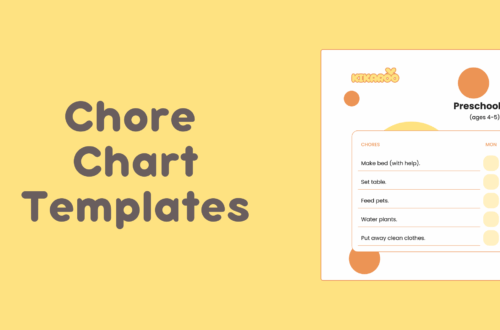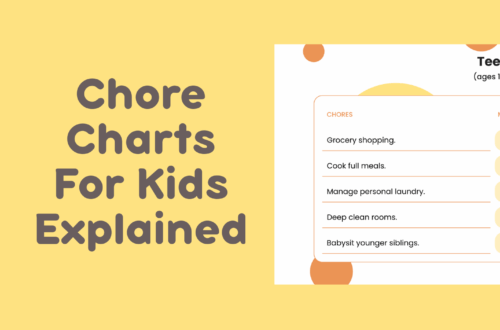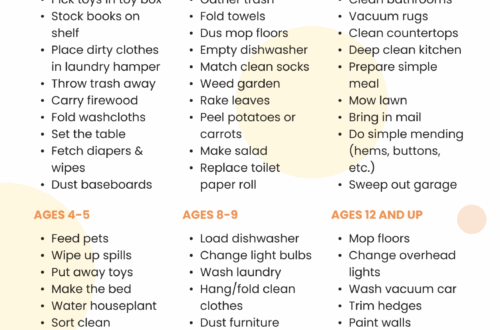Every parent knows the scene: a laminated paper chore chart on the fridge, stickers everywhere, and the daily struggle to remember who did what (and whether that allowance should be given). Paper charts are charming, but they can also be messy, disappear under homework, or become a passive decoration instead of a daily tool. But digital chore trackers for kids are changing that. Turning chaos into consistency and making chores easier for parents and fun for children.
Digital chore systems offer a different approach. One that leans on consistent reminders, clear feedback, and kid-friendly incentives to build routine and responsibility. Before you fully toss the paper chart, grab a printable version of our age-based chore charts to bridge the transition: Free printable chore chart by age (PDF).
Why digital chore trackers matter: the psychology behind kids’ routines
Kids learn responsibility through small, repeated actions. Psychology shows that forming habits requires consistent cues, repetition, and feedback. Exactly what a chore system should provide. Research on habit formation finds that repetition in stable contexts strengthens automatic behaviors, turning initial effort into routine over time (Lally et al., 2010). (Lally et al., 2010)
Plus, motivation matters. Self-Determination Theory explains that kids are more likely to stick with tasks when they feel competent, autonomous, and connected. Conditions digital chore trackers can support through progress tracking, choice, and positive feedback.
Top reasons why digital chore trackers beat paper charts
- Automated reminders stop the nagging: Phone or app alerts prompt kids at the right time so parents don’t have to repeat requests.
- Consistent, timestamped evidence: Digital checkmarks record when chores are completed, cutting disputes over whether a task was done.
- Personalized routines by age: You can set age-appropriate chores and adjust frequency without reprinting charts.
- Gamification and rewards: Badges, points, and progress bars make completing chores feel like leveling up. Great for motivation.
- Fairness and transparency: Shared family access means everyone sees expectations and rewards, reducing arguments about favoritism.
- Data to track progress and responsibility: Weekly summaries show trends so you can praise growth or tweak expectations.
- Encourages independence: Kids learn to check their own tasks and manage time with in-app prompts and checklists.
- Easier for busy families: Syncs across devices so both caregivers and kids stay aligned. Useful for split homes or shared custody.
- Backup for paper: Many apps let you print or export reports, giving you the best of both worlds (digital tracking + printable summaries).
Want a quick hybrid solution while you switch? Download our printable, age-based chore charts: Free printable chore chart by age (PDF).
Practical tips and common mistakes when switching to digital chore trackers
Tips for a smooth transition
- Start with clear, age-appropriate chores: Use a chores-by-age guide to match tasks to development. (See our chores by age guide.)
- Keep it simple at first: Limit active tasks to 4–6 daily or weekly chores until routines stick.
- Give choices: Let kids pick from a short list to increase buy-in and autonomy, supporting motivation described by Self-Determination Theory.
- Use rewards strategically: Reward consistent behavior (streaks, privileges), not perfection. Small wins build competence.
- Check progress together: Weekly check-ins help children reflect and feel ownership over responsibilities.
Common mistakes to avoid
- Overcomplicating the system: Too many features or rules overwhelms kids. Choose a simple layout and escalate later.
- Using rewards as bribes: Avoid paying for every chore; instead tie privileges or learning milestones to consistent completion.
- Not calibrating expectations: Match chores to age and ability. If a task is too hard, kids will disengage.
- Ignoring feedback: If an item consistently fails, ask why. Time, skill, or interest might be the issue.
Tracking chores with apps: when to choose digital and how Kikaroo helps
Digital chore trackers shine when you need reliability, consistent feedback, and a dash of fun. They let kids take responsibility while reducing parental friction. Kikaroo is built for families who want those exact outcomes: easy setup, age-based suggestions, reminders, and reward systems that promote independence without turning chores into constant negotiation.
- Set up routines in minutes and assign tasks by child.
- Automated reminders and completion timestamps reduce disputes.
- Points and rewards help children connect chores to real outcomes.
- Parent dashboards show habit trends so you can celebrate growth.
Ready to try a digital system that makes chores fairer and less stressful? Explore Kikaroo and see how it can fit your family’s routines.
Try Kikaroo – the chore tracker for kids
Related resources and further reading
- Chores by age guide – detailed age-appropriate task lists to match your child’s development.
- Tips to make chores easier – practical parenting strategies to reduce conflict and increase cooperation.
- How to motivate kids – motivation-focused approaches that complement digital trackers.
- Chore chart tools and apps – a roundup of printable and digital options, including hybrid ideas.
FAQ
Q: Will a digital tracker replace teaching responsibility?
A: No. It supports it. Digital systems provide structure, reminders, and feedback, but parents should still coach, model, and reflect with kids so chores build real-life skills.
Q: Can younger kids use digital chore apps?
A: Yes, with supervision. For preschoolers, pair the app with visual cues and parent assistance. As kids age, gradually shift responsibility to them.
Conclusion
Why digital chore trackers beat paper charts comes down to consistency, clarity, and motivation. They automate reminders, provide objective records, and create opportunities for kids to practice responsibility and independence. All while cutting down family friction. Use a printable chart during the transition if you want a tactile bridge, then move to a digital system like Kikaroo when you’re ready to scale routines and rewards.
Try Kikaroo to turn chores into learning moments and fewer arguments: Explore Kikaroo

 Home
Home Features
Features Testimonials
Testimonials Downloads
Downloads FAQ
FAQ Blog
Blog







